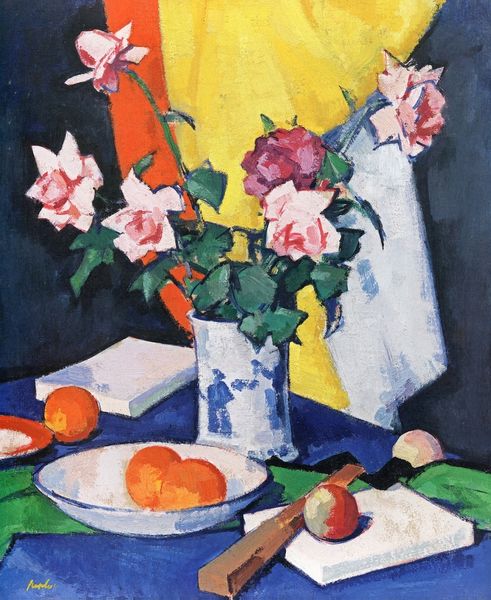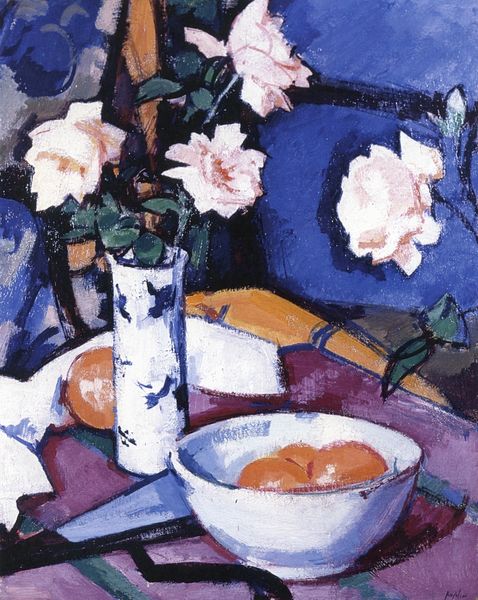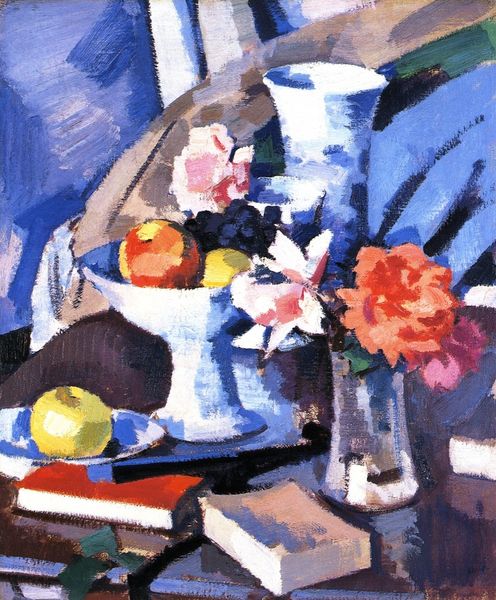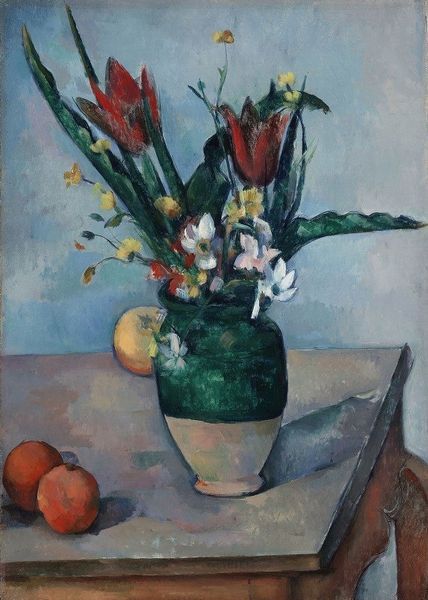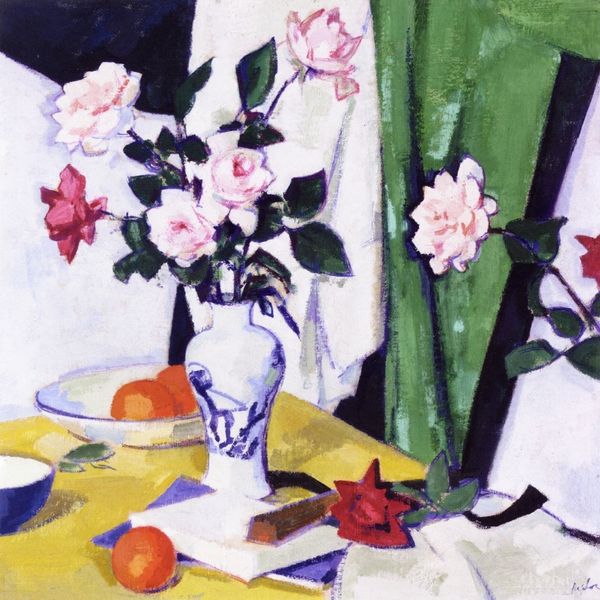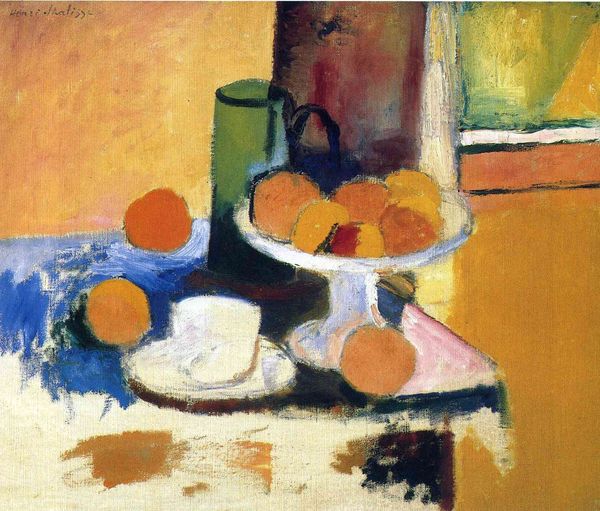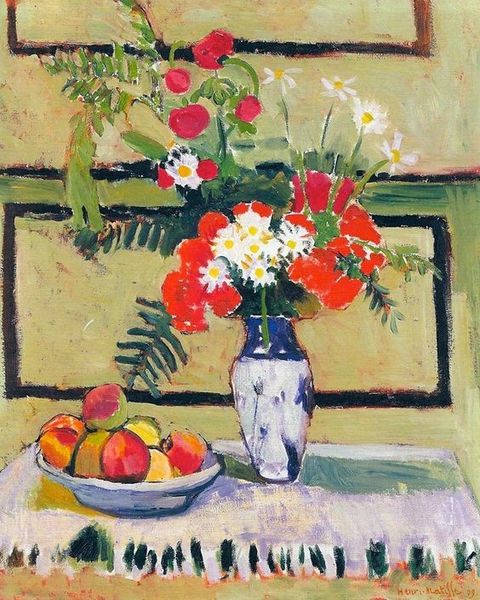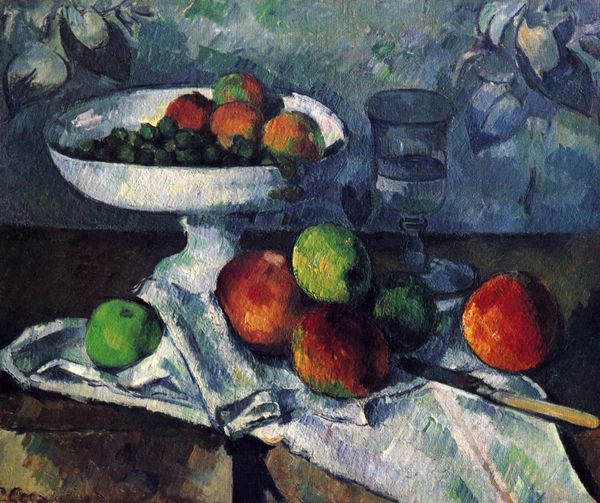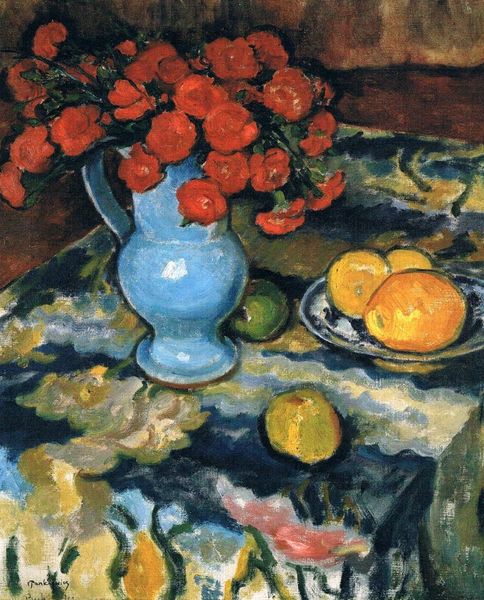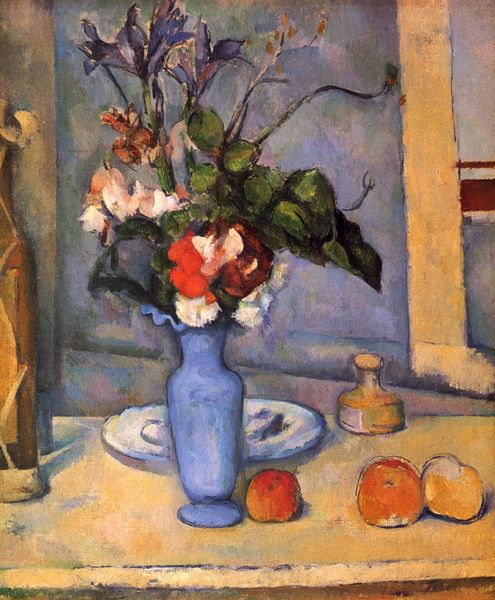
Copyright: Public domain
Curator: Samuel Peploe painted this still life, “Apples and a White Rose in an Oriental Vase,” in 1924. Editor: It’s deceptively simple. At first glance, a familiar composition, but there's an immediacy in the brushstrokes and an almost rough handling of the paint that disrupts any sense of classical still-life tranquility. Curator: Absolutely. Peploe, a key figure in the Scottish Colourists movement, was deeply influenced by Post-Impressionism, particularly the works of artists like Cézanne and Matisse. You see that influence in the flattening of space and the emphasis on bold colors. Still life was considered the low end genre painting, often depicted as domestic and feminine; I wonder how you interpret Peploe and the other Colourists positioning themselves in this space? Editor: The "Oriental vase" itself is so interesting, isn't it? The very presence of an object like this one prompts questions. Where was it made, under what conditions? What does importing these goods do to artistic exchange—what's lost and what's gained in translation, literally and figuratively? Curator: Exactly! And how the use of the exotic orient came to dominate popular culture. The objects he selected, along with his aesthetic, positioned him in alignment with a refined audience. It speaks to the evolving role of still life painting during this period – how it became a vehicle to express personal taste, or declare a modern identity while at the same time, catering to societal demands of exoticism and domestic decorum. Editor: And look at that rose – it's rendered with such thick impasto. It ceases to be merely a representation of a rose. Instead it asserts itself as pigment, built up laboriously on canvas, isn’t it. Peploe makes the viewer aware of not just the subject, but the making of art itself. Curator: I see what you mean; it is less about perfection or illusionism and more about the sheer physicality of paint. The institutional support by wealthy merchants facilitated artistic communities across Scotland, so with that being considered do you think it would impact how or what type of materials Peploe would employ in order to appeal to them? Editor: Undoubtedly. I'd argue that he uses it strategically; those broad strokes and that heavy texture—it's all part of the selling point! I wonder what type of pigment he uses? How might he procure this unique material? Curator: Fascinating perspectives. This painting really encapsulates the dialogues within modernity; as a result, the oriental influences really highlight societal consumerism at the time. Editor: I agree, it reveals art's fascinating tension between reflecting the world and actively participating in it.
Comments
No comments
Be the first to comment and join the conversation on the ultimate creative platform.
